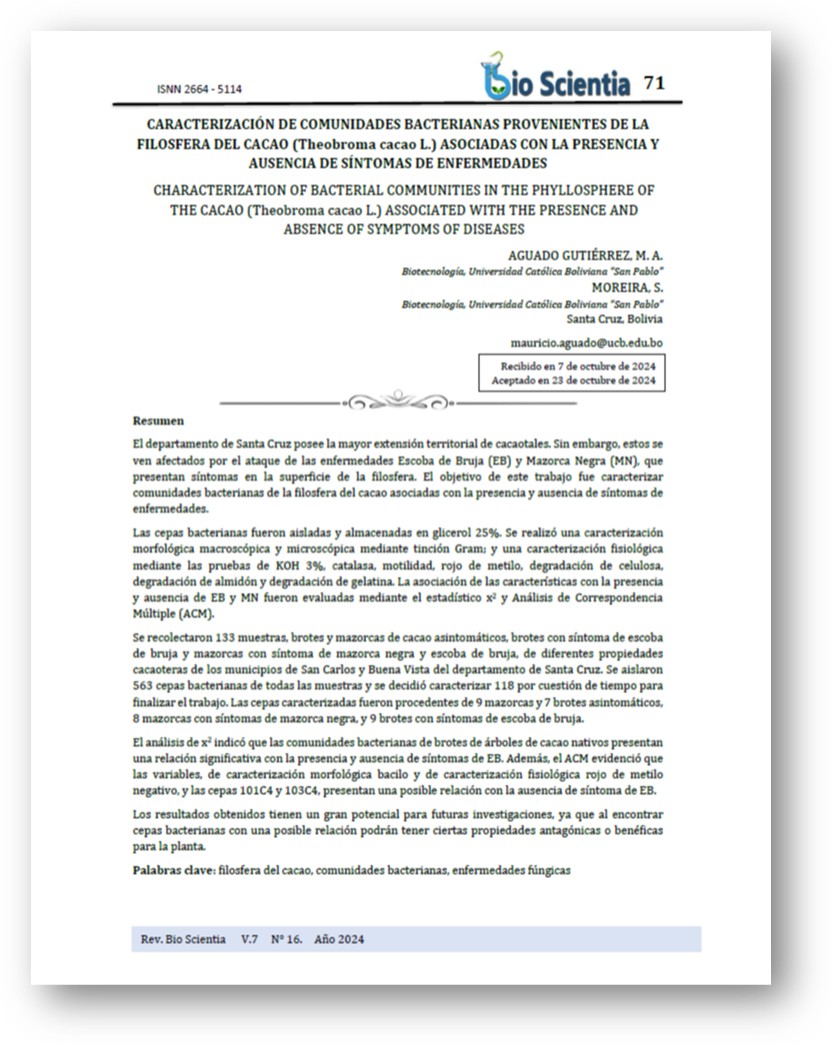CHARACTERIZATION OF BACTERIAL COMMUNITIES IN THE PHYLLOSPHERE OF THE CACAO (Theobroma cacao L.) ASSOCIATED WITH THE PRESENCE AND ABSENCE OF SYMPTOMS OF DISEASES
Keywords:
cocoa phyllosphere, fungal diseases, bacterial communitiesAbstract
The department of Santa Cruz has the largest area of cocoa plantations. However, these are affected by Witches' Broom (EB) and Black Moth (MN) diseases, which present symptoms on the phyllosphere surface. The objective of this work was to characterize bacterial communities of the cocoa phyllosphere associated with the presence and absence of disease symptoms.
Bacterial strains were isolated and stored in 25% glycerol. A macroscopic and microscopic morphological characterization was performed by Gram staining; and a physiological characterization by 3% KOH, catalase, motility, methyl red, cellulose degradation, starch degradation and gelatin degradation tests. The association of the characteristics with the presence and absence of EB and MN were evaluated using the x2 statistic and Multiple Correspondence Analysis (MCA).
A total of 133 samples, asymptomatic cocoa shoots and cobs, shoots with witches' broom symptom and cobs with black pod and witches' broom symptom, were collected from different cocoa farms in the municipalities of San Carlos and Buena Vista in the department of Santa Cruz. A total of 563 bacterial strains were isolated from all samples and it was decided to characterize 118 due to time constraints to complete the work. The strains characterized were from 9 asymptomatic cobs and 7 asymptomatic shoots, 8 cobs with black cob symptoms, and 9 shoots with witches' broom symptoms.
The x2 analysis indicated that the bacterial communities of shoots from native cocoa trees presented a significant relationship with the presence and absence of EB symptoms. In addition, the MCA showed that the morphological characterization variables bacillus and physiological characterization variables methyl red negative, and strains 101C4 and 103C4, show a possible relationship with the absence of EB symptoms.
The results obtained have great potential for future research, since finding bacterial strains with a possible relationship may have certain antagonistic or beneficial properties for the plant.



